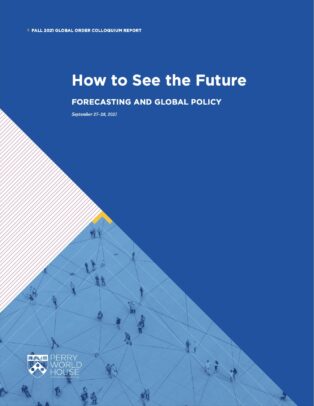
How to See the Future: Forecasting and Global Policy
The world failed to prepare for the COVID-19 pandemic; the U.S. government did not foresee how quickly the Taliban would reconquer Afghanistan; economists failed to predict the collapse of Chinese real estate giant Evergrande. Could new forecasting methods have made a difference?
There is a major gap between academic research and policy application in forecasting methods. Scholarship and experiments have shown that new methods – particularly crowdsourced probabilistic forecasting – can significantly improve forecast accuracy. However, the world’s governments, including the United States, have mostly failed to implement these new methods and integrate them with existing tools for predicting the future.
To help bridge this gap and advance discussions on forecasting, Perry World House convened a two-day colloquium, How to See the Future: Forecasting and Global Policy, on September 27-28, 2021. Our new report on the colloquium explores how better forecasting can facilitate better policy. When governments can rank the probabilities of global threats, they can tailor policy more accurately to the world’s most pressing problems.

